It was a good year for PR firms boasting major healthcare practices. Each of the top 10 agencies in O’Dwyer’s 2017 Rankings of Healthcare PR firms witnessed upticks in revenue in 2016 — a group including Spectrum (+34.8 percent overall, with $20 million in healthcare revenue), Crosby Marketing Communications (+21.7 percent, $10.6 million healthcare revenue), ReviveHealth (+40.1 percent, $14 million healthcare revenue), Cooney Waters Unlimited (+8.2 percent, $15.2 million healthcare revenue) and W2O Group (+33.0 percent, $103.2 million healthcare revenue).
|
|
Agency executives said that level of performance has its roots in the pivotal role that PR now plays in helping stakeholders across the healthcare sector deal with a range of emerging trends. Among them: an increasingly empowered and tech-savvy consumer base, an explosion in the role of personalized health data in determining the way patients manage their well-being and, perhaps most significantly, the mixed signals being sent by Washington in regards to where government healthcare policy is heading.
“2016 was a banner year for Crosby,” said Crosby President and CEO Raymond Crosby. The firm, with clients that include Kaiser Permanente and the U.S. Dept. of Health and Human Services, “grew more than 20 percent, added more than 20 new staff and maintained strong client satisfaction and staff satisfaction ratings.”
Crosby said two strategies continued to drive his company’s success last year. “First,” he said, “we stay hyper-focused on our three practice areas of healthcare, nonprofits & causes and federal government.” But perhaps even more important, he notes, is the importance of delivering fully integrated communications programs. “Our company structure, strategic planning process and talent is built on true integration, which we believe is critical to maximize results.”
|
|
With a major investment in beefing up its digital and social media teams and analytics tools, Crosby looks to keep on thriving in an increasingly digitized healthcare landscape. “The continued shift to more consumer-directed care and the ‘Yelpification’ of patients and their family members using social media channels to rate and comment on everything from individual doctors to overall quality of care” is changing the way that organizations build customer trust, Crosby said. “This is requiring greater levels of attention and resources to protect and enhance an organization’s reputation.”
Timothy Bird, CEO of Cooney Waters, which is celebrating its 25th anniversary this year, said his company bounced back from a 9.1 percent dip in 2015 by building on its long-term relationships with clients as well as making its own investments in the latest communications and research tools and technology. That focus has allowed Cooney Waters to add “a range of new client engagements” across academia, healthcare technologies and diagnostics, new disease areas and international health organizations.
Patients take a more active role
|
|
Bird also emphasizes the importance of the more active stance that patients are taking toward their own care. “Being visibly in control is emerging as a powerful aspiration for consumers who want to show they are making the most out of every opportunity in their personal and professional lives,” he said. One way in which PR firms can aid in achieving this goal, he adds, is by spreading information about the new tools patients can use to help give more up-to-date, accurate information to their doctors — whom he said still have a high degree of patient trust.
But encouraging patients to interact with each other is also turning out to be a key strategy for delivering the healthcare industry’s message. “Consumers today are casting a wide net looking for health information,” Bird said. “They have an ever-increasing appetite for new sources of information with authentic content from those with conditions like themselves.” One example of such a resource is “Parkinson’s More Than Motion,” a Parkinson’s disease Facebook community sponsored by UCB, a Cooney Waters client. Since its launch in 2012, the community has amassed a base of over 75,000 fans.
Investing in innovation
|
|
It was also a big year for W2O, whose 2016 acquisitions included healthcare consultancy Pure Marketing and digitally focused marketing agency Sentient Interactive, as well as social research and analytics consultancy Marketeching Solutions. Jim Weiss, W2O Group’s CEO and Founder, said the company’s acquisitions, coupled with a continued emphasis on helping clients negotiate an increasingly volatile healthcare marketplace, “drove us to grow by more than 30 percent at the highest margin in our history.”
Weiss said that W2O has been active in many aspects of the healthcare field over the past year. “We helped launch and support many exciting organizations and companies to launch new clinical trials, products and initiatives to help people suffering from multiple sclerosis, muscular dystrophy, heart disease, Alzheimer’s disease and multiple myeloma, to name just a few,” he said. That work has cemented what he said is W2O’s “long-standing commitment to the healthcare sector.”
Among the changes that Weiss sees in the pipeline for 2017 are continuing market pressure on drug pricing, changes in the access and reimbursement landscape and “a potentially new approach to, and funding for, the FDA and NIH.”
That combination of factors is, for him, a source of excitement rather than cause for trepidation. “We are in what we believe is the most exciting era in healthcare communications,” he said, “where our spirit of innovation and investment in new, more targeted and cutting-edge approaches and ideas may finally pay off as the marketplace is more ready than ever to accept them.”
|
|
An emphasis on “guiding people through the process” of dealing with the healthcare system is an important factor for Spectrum President and CEO Jonathan Wilson. “Clients are uncertain as to what’s happening around healthcare,” Wilson said, and he notes that helping bring a level of certainty and awareness to consumer interactions with the healthcare system is one cause of Spectrum’s success.
About three-and-a-half years into what he terms a “five-year plan” for the company, Wilson has seen his vision for Spectrum pay off. Over that period, he said that revenues have jumped about 300 percent. Another clear example of growth is the rising number of employees at Spectrum—from 26 when Wilson arrived to 90 now. He also cites a constantly diversifying client base as key to his strategy, saying that 43 percent of the firm’s 2016 revenue increase stems from new business.
That diversity can also be seen in the five practice groups that are currently part of Spectrum’s approach: biopharma, smaller biotechs, consumer science, public affairs and health technology. Together, those areas constitute a broad-based strategy that Wilson said is a major part of the company’s rising fortunes.
As regards the near future, Big Data and its effects will prove to be pivotal in the transformation of the healthcare market over the next few years, Wilson adds. “We are just at the tip of the iceberg as regards how Big Data is going to affect consumers,” he said. Technology as a whole is going to keep determining the course the industry, with wearables constituting a “massive trend,” and a new range of machinery and interfaces allowing healthcare professionals to “deliver quality care in the most effective manner.” Using such methods as informational webinars, Wilson said that Spectrum is making the “Big-Data perspective” understandable through consistent messaging delivered by a talented workforce.
A new range of services
|
|
At ReviveHealth, the changes taking place across the healthcare sector also represented a major opportunity for growth. In its first year under the Weber Shandwick umbrella, the company’s strong gains were due largely to the expanding range of its services. “The agency’s revenue diversification accelerated significantly in 2016,” said ReviveHealth Founder and CEO Brandon Edwards, “with almost half of revenue now generated by digital, social, creative, advertising, and strategic planning capabilities.”
Edwards said that Revive Health has built a “content machine”— one that includes such functions as branding, advertising and social media in addition to public relations and crisis management. “One day,” he said, “we will look back on 2016 as the most pivotal year in Revive Health’s transformation from a PR firm to a full-service agency.” That transformation reflects the market that ReviveHealth serves. According to Edwards, “the massive shift in healthcare marketing currently happening in the industry (particularly in our sectors — health systems, health services and health information technology) is exactly what ReviveHealth was built to address.”
By emphasizing deep industry experience, knowledge of business-to-business dynamics and a wide range of integrated capabilities, he said that the company is well set up to continue its success. “Bringing together strategy, creativity and execution is a key value proposition for ReviveHealth since many organizations want to work with just one firm,” he notes.
That kind of one-stop shopping has obvious benefits for agencies as well as clients. “There is a business reality in this market opportunity,” Edwards said. “We are positioned for greater ‘share of wallet’ with our clients and shift our relationships from the PR budgets to the marketing budgets.”
Following Washington’s lead
No discussion of the future of the healthcare sector is complete, however, without considering the questionable future of the Affordable Care Act. Spectrum has addressed the potential effects of Trumpcare with “Riding Out the First 100 Days of Trumpcare,” an infographic that highlights the major healthcare policy developments of the early days of the Trump administration. Two of its webinars, “Trumpcare: Finding a Path Forward” and “Buckle Up: Your Essential Guide to Trumpcare,” also aim to inform industry professionals about what may be facing them.
It seems that one thing that everyone can agree on is that uncertainty is the only sure thing as the history of Trumpcare progresses. “Regardless of how the policy battle over the Affordable Care Act plays out,” Crosby said, “it will create varying levels of upheaval and opportunity across the healthcare continuum.” He notes that stakeholders, from employers and healthcare providers to patient advocacy groups, will need help adapting their messaging strategies to accommodate any of the various scenarios that could face them.
Providing that help, Bird adds, is a job tailor-made for PR firms, “With our understanding of the healthcare policy and regulatory landscape and political realities,” he said, “we can help our clients navigate the new realities and position themselves wisely for long-term success.”
Weiss notes the transformations that could ensue from “a new administration looking to evolve the Affordable Care Act,” as well as make changes in regulating both drug pricing and development. But he also notes the gains that could result from those transformations. “We are innovating with our clients more than ever before,” he said, “and helping them succeed by helping them anticipate and prepare for issues and challenges,” he said.
The coming policy shifts, in addition to the many other changes in the healthcare landscape, are creating what Edwards terms “New World Order marketing.” As he sees it, New World Order marketing “recognizes the growing confluence of the various marketing communication disciplines such as marketing, branding, public relations and digital.” When all of those things come together, the result is a new way of doing business that promises to be uniquely qualified to address the developments facing the healthcare sector in 2017 and beyond.


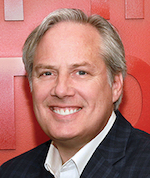 Raymond Crosby
Raymond Crosby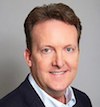 Timothy Bird
Timothy Bird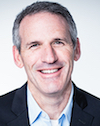 Jim Weiss
Jim Weiss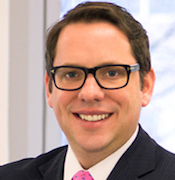 Jonathan Wilson
Jonathan Wilson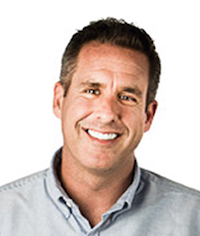 Brandon Edwards
Brandon Edwards
 Lo Isidro, senior director at Real Chemistry with more than a decade of strategic communications and PA experience, has joined Narrative Strategies.
Lo Isidro, senior director at Real Chemistry with more than a decade of strategic communications and PA experience, has joined Narrative Strategies. Nelson Fernandez, former North American chair of APCO Worldwide and managing director of Burson-Marsteller, has joined Volunteers in Medicine Berkshires as director of communications and PA.
Nelson Fernandez, former North American chair of APCO Worldwide and managing director of Burson-Marsteller, has joined Volunteers in Medicine Berkshires as director of communications and PA. Lilit Bargar, who was most recently an EVP in the healthcare practice at Weber Shandwick, comes on board at GCI Health as EVP, corporate practice lead.
Lilit Bargar, who was most recently an EVP in the healthcare practice at Weber Shandwick, comes on board at GCI Health as EVP, corporate practice lead.
 Five ways that successful thought leaders are made.
Five ways that successful thought leaders are made.


 Have a comment? Send it to
Have a comment? Send it to 
No comments have been submitted for this story yet.